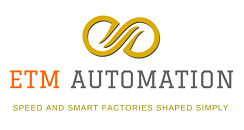Transition to the 21st century
Computers today exceed human intelligence in a broad variety of intelligent yet narrow domains such as playing chess, diagnosing certain medical conditions, buying and selling stocks, and guiding cruise missiles. Yet human overall remains far more supple and flexible. Computers are still unable to describe the objects on a crowded kitchen table, write a summary of a movie, tie a pair of shoelaces, tell the difference between a dog and a cat (although this feat, I believe, is becoming feasible today with contemporary neural networks – computer simulations of human neurons), recognizable humour, or perform other subtle tasks in which their human creators excel.
One reason for this disparity in capabilities is that our most advanced computers are still simpler than human brain – currently about a million times simpler ( give or take one or two orders of magnitude depending on the assumptions used ). But this disparity will not remain the case as we go through the early part of the next century. Computers doubled the speed every three years at the beginning of the 20th century, every two years in the 1960s and 1960s, and are now doubling speed every twelve months. This trend will continue, with computers achieving the memory capacity and computing speed of the human brain around the year 2020.

Achieving the basic complexity and capacity of the human brain will not automatically result in computers matching the flexibility of human intelligence. The organization and content of these resources – the software of intelligence – is equally important. One approach to emulating the brain’s software is through reverse engineering – scanning a human brain ( which will be achievable early in the next century) and essentially coping its neural circuitry in a neural computer ( a computer designed to simulate a massive number of human neurons) of sufficient capacity.
There is a plethora of credible scenarios for achieving human level intelligence in a machine. We will be ale to evolve and train a system combining massively parallel neural nets with other paradigms to understand language and model knowledge, including the ability to read and understand written documents. Although the ability of today’s computers to extract and learn knowledge from natural language documents is quite limited, their abilities in this domain are improving rapidly. Computers will be able to read on their own, understanding and modelling what they have red, by the second decade of the 21st century. We can then have our computers read all of the world’s literature – books, magazines, scientific journals, and other available material. Ultimately, the machines will gather knowledge on their own by venturing into the physical world, drawing from the full spectrum of media and information services, and sharing knowledge with each other ( which machines can do far more easily than their human creators).
An extract from the book “The Age of Spiritual Machines” by “Ray Kruzwell”
For more information contact
Name: ETM Automation Pvt Ltd
Address: 115, City Centre, Behind Persistent Building, Hinjewadi, Phase – 1, Pune – 411057
CIN: U72900PN2018PTC177298
Contact: Sravan Mahesh Desai(MD), sr****@et***********.com , +91 9096975296
